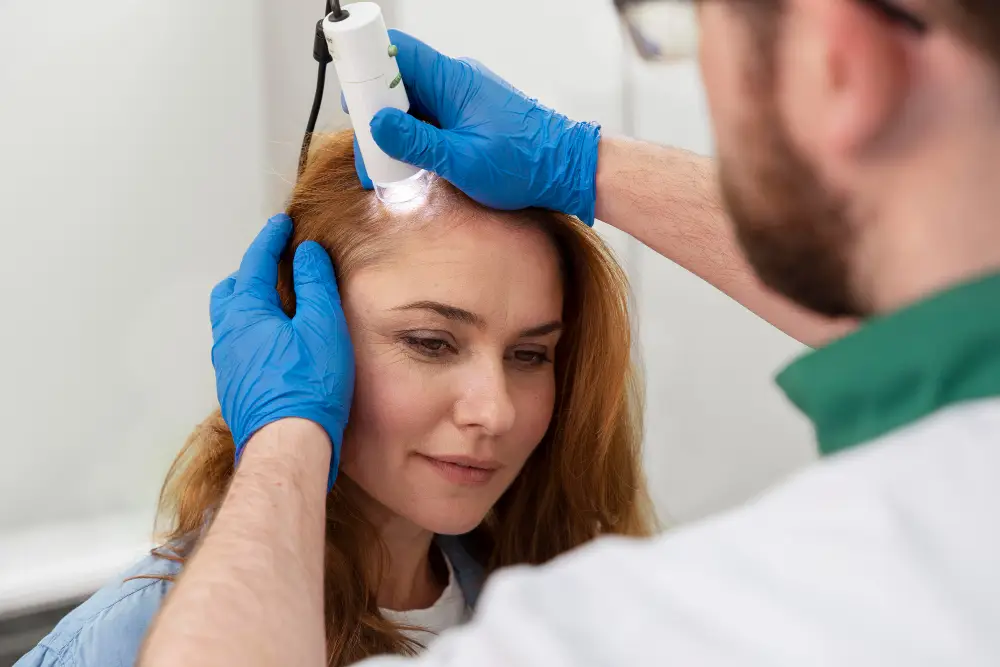
Understanding Stem Cell Treatment for Lumbar Disc Repair: Your Path to Clarity
Navigating chronic back pain and exploring advanced options can feel overwhelming. This comprehensive guide from the team at Regencord in Pereira, Colombia, is designed to empower you with knowledge about stem cell treatment for lumbar disc repair, highlighting the patient journey and the unique advantages of seeking care in our supportive environment. We believe in informed decisions, ethical approaches, and prioritizing your long-term well-being.
Key Takeaways:
- Chronic lumbar disc pain significantly impacts life quality, and conventional treatments often have limitations.
- Stem cell treatment for lumbar disc repair is an evolving area of regenerative medicine, focused on spinal disc regeneration.
- In the USA, stem cell therapies for specific conditions like disc repair are largely considered experimental and are primarily available through clinical trials or not yet FDA-approved.
- Pereira, Colombia, offers a compelling alternative with a well-regulated healthcare system (governed by INVIMA and the Colombian Ministry of Health), modern facilities, and a patient-centric approach to care.
- The Regencord team provides comprehensive support for international patients, transforming the logistical complexities into a seamless patient journey.
- Making an informed decision requires understanding the science, regulatory context, and your personalized candidacy, best achieved through a confidential case review.
Introduction: Seeking Relief Beyond Conventional Paths
For individuals grappling with persistent lumbar disc pain, the journey for relief can be long and disheartening. When conservative treatments like physical therapy and medication offer only temporary respite, and the thought of surgery feels daunting, exploring advanced, less invasive options becomes a natural next step. Stem cell treatment for lumbar disc repair is increasingly discussed as a potential avenue for spinal disc regeneration and chronic back pain relief, stirring both hope and questions.
This guide is crafted by the team at Regencord in Pereira, Colombia, to demystify the conversation around regenerative approaches for lumbar discs. Our goal is to provide clear, ethically sound, and source-verified information, helping you understand what this treatment entails, its current standing in the medical community, and how a patient-centric approach in a supportive environment like Pereira can make a difference in your decision-making process.
The Stakes: Living with Chronic Lumbar Disc Pain
Lumbar disc degeneration is a common cause of chronic back pain, affecting millions worldwide. The intervertebral discs, acting as shock absorbers between the vertebrae, can wear down over time, leading to pain, stiffness, and sometimes neurological symptoms if nerves are compressed. This condition significantly impacts daily life, limiting mobility, work capacity, and overall well-being. A study highlighted by the NIH emphasizes the widespread prevalence and significant burden of chronic low back pain, often stemming from disc issues, underscoring the critical need for effective and sustainable relief strategies.
Patients often report a decline in physical activity, social engagement, and mental health. The search for chronic back pain relief becomes a primary focus, driving individuals to explore various treatments, from conventional to innovative. The emotional toll of persistent pain, coupled with the frustration of limited long-term solutions, often leads patients to seek out options that promise deeper, more lasting improvements in spinal disc regeneration.
The Conventional Approach to Lumbar Disc Pain in the USA
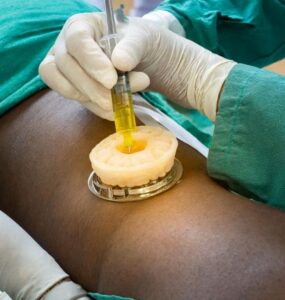
In countries like the USA, the treatment pathway for lumbar disc pain typically follows a progressive series of interventions. It often begins with conservative management, including rest, physical therapy, pain medication (over-the-counter and prescription), and sometimes corticosteroid injections. For many, these approaches provide adequate relief. However, when chronic pain persists and significantly impacts quality of life, surgical options like discectomy or spinal fusion may be considered.
While surgery can be effective for certain conditions, it carries inherent risks, requires significant recovery time, and is not always suitable for every patient. Furthermore, the regulatory landscape for advanced regenerative therapies, such as stem cell treatment for lumbar disc repair, is strictly controlled in the USA by entities like the FDA. The FDA generally considers unapproved stem cell products to be drugs or biological products that require rigorous testing through clinical trials to demonstrate safety and efficacy before they can be legally marketed. This means that, for specific conditions like disc repair, these treatments are largely investigational or not yet widely approved outside of controlled study environments.
This reality often leaves patients feeling constrained by their options, seeking avenues that might offer spinal disc regeneration without the invasiveness or long recovery associated with surgery, or the limitations of treatments available in their home country.
What Are Stem Cells and How Might They Help Disc Repair?
Stem cells are remarkable cells with the ability to develop into many different cell types and to self-renew. In the context of lumbar disc repair, the focus is often on mesenchymal stem cells (MSCs), which can be sourced from a patient’s own body (known as autologous injection), such as from bone marrow or adipose (fat) tissue.
The theoretical premise for using stem cells in disc repair revolves around their potential to:
- Reduce Inflammation: Stem cells may possess anti-inflammatory properties that could alleviate pain in degenerated discs.
- Promote Tissue Regeneration: There is ongoing research into their capacity to differentiate into disc cells, potentially aiding in spinal disc regeneration and restoring some disc height or function.
- Modulate the Immune System: They may help create a more favorable environment for healing.
It’s important to understand that while preclinical studies and early-phase clinical trials (as documented on platforms like ClinicalTrials.gov) have shown promising results, the field of regenerative medicine for disc repair is still evolving. Ethical and responsible application of these therapies demands thorough patient evaluation and a clear understanding of the current scientific evidence. The aim is often to enhance the body’s natural healing capabilities, not to offer a “cure-all” solution. The team at Regencord prioritizes providing clear, science-backed information, recognizing that these are not yet universally approved or guaranteed treatments, but rather advanced pathways for considered exploration.
The Pereira, Colombia Advantage: A Context for Advanced Care
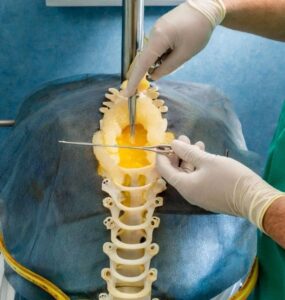
When seeking advanced regenerative options for lumbar disc repair, the location of care is as significant as the treatment itself. Pereira, Colombia, and its surrounding region, offers a distinct advantage for international patients considering these pathways:
Modern Healthcare Infrastructure and Regulatory Oversight
Colombia boasts a well-developed healthcare system with modern facilities, skilled medical professionals, and robust regulatory oversight. Institutions like the Colombian Ministry of Health and INVIMA (the National Food and Drug Surveillance Institute) ensure that medical practices adhere to high standards of quality and patient safety. This commitment to regulated care provides a foundational layer of trust and legitimacy, addressing a primary concern for patients contemplating medical travel.
A Patient-Centric, Unhurried Journey
As highlighted by our experience facilitating international care, many patients pursuing advanced regenerative options feel rushed or unheard in conventional healthcare settings. They yearn for a more comprehensive, unhurried assessment that considers their unique biology and lifestyle. In Pereira, the approach often emphasizes personalized attention, allowing for in-depth consultations and a thorough understanding of your condition and potential pathways. This focus on individual needs is crucial for making informed decisions.
A Conducive Environment for Healing
The city of Pereira, nestled in Colombia’s picturesque coffee region, offers more than just advanced medical facilities. Its serene environment, pleasant climate, and vibrant culture contribute to a holistic healing experience. The supportive atmosphere, combined with the dedicated patient advocacy provided by the Regencord team, means that patients can focus entirely on their recovery and well-being, free from the administrative and logistical burdens that can amplify stress, turning a complex journey into a restorative one. This synthesized contextual insight comes from deep experience in understanding what truly supports a patient’s healing process.
Access to Innovative Approaches
While maintaining ethical boundaries and avoiding unverified claims, Colombia’s medical environment allows for the exploration of advanced regenerative medicine pathways that might not be as readily available or as cost-effective in other countries. Our focus is on providing access to considered autologous injection methods, guided by a philosophy of patient empowerment and scientific responsibility.
The Regencord Clarity Compass for Spinal Health

To help you navigate the complexities of exploring advanced regenerative options for lumbar disc repair, the team at Regencord has developed a conceptual resource: “The Regencord Clarity Compass for Spinal Health.” This tool is designed to serve as a practical guide, ensuring you have all the necessary information and considerations before making any decisions.
The Clarity Compass helps you:
- Understand Your Condition: A checklist to ensure you have a clear diagnosis and understand the severity of your lumbar disc degeneration.
- Evaluate Treatment Options: A structured way to compare conventional vs. regenerative pathways, considering pros, cons, and current scientific standing (referencing NIH and PubMed for evidence).
- Assess Candidacy: Questions to help you determine if you are a potential candidate for regenerative approaches based on medical history and lifestyle.
- Prepare for the Journey: A step-by-step outline of what to expect if considering international care, from initial contact to post-procedure follow-up.
- Logistical Readiness: A checklist for travel documents, accommodation, and support systems for your time in Pereira.
- Financial Planning: Guidance on understanding the financial aspects and discussing potential pathways transparently.
This Compass embodies our commitment to transparent education and patient empowerment, ensuring that every step you take towards potential chronic back pain relief is informed and confident.
Our Regenerative Philosophy & Approach
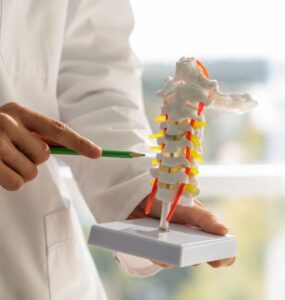
At Regencord in Pereira, Colombia, our philosophy is rooted in patient empowerment, ethical practice, and transparent education. We believe that informed patients make the most confident and beneficial decisions for their health. Our approach to regenerative pathways for lumbar disc repair is guided by several core principles:
- Personalized Assessment: We understand that every patient’s condition is unique. Our process begins with a thorough, confidential case review, evaluating your medical history, diagnostic images, and individual health goals to determine if a regenerative pathway is a considered option for you.
- Ethical Sourcing and Application: We prioritize the responsible and ethical use of autologous (your own body’s) cells within a regulated medical environment, adhering to the guidelines set by INVIMA and the Colombian Ministry of Health. Our focus is on supporting your body’s natural processes.
- Education and Transparency: We are committed to providing clear, scientifically referenced information about regenerative medicine. We will discuss the current evidence, the potential benefits, and the limitations, ensuring you have a realistic understanding of what to expect without making unsubstantiated claims.
- Holistic Patient Support: Our team goes beyond medical coordination. We offer comprehensive support throughout your entire journey—from initial inquiry and travel logistics to on-ground assistance in Pereira and post-procedure follow-up. Our synthesized contextual insight confirms that this seamless support transforms the international patient experience.
- No Guarantees, Only Guided Exploration: We steadfastly avoid promises of outcomes. Instead, we offer a carefully guided exploration of advanced pathways, empowering you with the knowledge to decide if this approach aligns with your health objectives for spinal disc regeneration and chronic back pain relief.
Our commitment is to be a trusted resource, helping you navigate the evolving landscape of regenerative medicine with clarity and confidence.
Overcoming Common Hesitations: Why Seeking Clarity is a Strategic Advantage
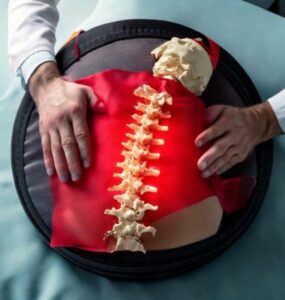
It’s natural to have questions and concerns when considering advanced medical treatments, especially in an international setting. The team at Regencord understands these hesitations and believes that addressing them with transparency and factual information is key to empowering you. Let’s tackle some common concerns:
Hesitation 1: “Is stem cell treatment for lumbar disc repair legitimate and safe? I hear it’s experimental and unregulated, especially internationally.”
Clarity and Trust: We understand this concern deeply. The field of regenerative medicine is indeed evolving, and it’s critical to distinguish responsible practice from unverified claims. While many stem cell therapies are still undergoing research (as often highlighted by the NIH and ClinicalTrials.gov), Regencord’s approach focuses on established, ethically sourced autologous methods within a robust, regulated medical framework. Colombia’s healthcare system is overseen by entities like INVIMA and the Colombian Ministry of Health, which set stringent standards for medical practice and patient safety. Our commitment is to provide access to carefully considered regenerative pathways that adhere to these regulations, not to experimental or unregulated procedures. We emphasize a thorough, individualized assessment to determine if you are a suitable candidate, ensuring that any path forward is grounded in responsible medical consideration.
Hesitation 2: “Traveling for medical care, especially for my back, sounds incredibly stressful and complicated. I don’t know where to start or who to trust.”
Clarity and Trust: Your concern about the logistical and emotional burden of international medical travel is entirely valid. We’ve synthesized this as a core patient journey insight: the perceived complexity can be a major barrier. That’s precisely where the Regencord team provides comprehensive support. We transform the journey from an overwhelming prospect into a structured, supportive pathway. Our patient advocacy includes detailed assistance with everything from your initial confidential case review and travel planning to on-ground support in Pereira, including accommodation suggestions, local transportation, and clear communication with medical staff. We act as your guide, ensuring you feel supported and informed every step of the way, allowing you to focus entirely on your well-being.
Hesitation 3: “I’ve tried so many treatments for my back pain; I’m exhausted by false hope. Why should I believe this will be any different?”
Clarity and Trust: We hear your frustration, and we validate your experience of seeking chronic back pain relief with limited success. It’s painful to invest hope and effort only to be disappointed. Our philosophy at Regencord is not to offer “false hope” or “miracle” solutions. Instead, we offer a pathway of clarity, a thorough and unhurried assessment of your unique condition, and transparent education about the potential of advanced regenerative approaches. We empower you with accurate information, grounded in scientific discussion (referencing sources like PubMed and NIH), to help you understand if these pathways represent a logical next step for you. Our commitment is to help you make an informed decision, providing you with verifiable facts and a considered approach, rather than empty promises.
Hesitation 4: “What about the cost? Is it truly affordable, or will I face hidden fees and unexpected expenses when seeking care abroad?”
Clarity and Trust: Financial considerations are a significant and legitimate concern. While we do not promise “cheap” care, we can confirm that the cost of advanced medical treatments in Colombia, including regenerative pathways for lumbar disc repair, often represents a significant value proposition compared to similar quality care in the USA. This competitive pricing does not come at the expense of quality or safety, given the regulated healthcare environment. Transparency is key. Your confidential case review includes a clear discussion of potential pathways and associated considerations, allowing you to understand the financial aspects upfront. We believe in providing you with all the information needed to make a financially informed decision, free from hidden fees or surprises.
By addressing these common hesitations with directness, empathy, and verifiable information, we aim to build a foundation of trust. Seeking clarity is not just about finding a treatment; it’s about gaining peace of mind and making a strategic, informed decision about your health future.
Glossary of Key Terms
- Autologous Injection: A procedure where cells or tissues are harvested from the patient’s own body, processed, and then reintroduced to the same patient. This minimizes the risk of immune rejection.
- Chronic Back Pain: Persistent pain in the back, typically lasting for three months or longer.
- Intervertebral Discs: Cushions located between the vertebrae of the spine, acting as shock absorbers and allowing for flexibility.
- Lumbar Disc: Refers to the intervertebral discs located in the lower back (lumbar region) of the spine.
- Mesenchymal Stem Cells (MSCs): A type of multipotent stromal cell that can differentiate into various cell types, including bone, cartilage, muscle, and fat cells, and has immunomodulatory properties.
- Regenerative Medicine: A field focused on developing new methods to regrow, repair, or replace damaged or diseased cells, organs, or tissues.
- Spinal Disc Regeneration: The process of repairing or replacing damaged intervertebral disc tissue, often through biological interventions.
Frequently Asked Questions (FAQ)
Here are answers to common questions about stem cell treatment for lumbar disc repair and seeking care with the Regencord team:
Q: Is stem cell treatment for lumbar disc repair a universally approved treatment?
A: The regulatory status of stem cell treatments varies globally. In the USA, many such therapies are considered investigational by the FDA and are not widely approved outside of clinical trials. In Colombia, within its regulated medical framework overseen by INVIMA and the Colombian Ministry of Health, certain autologous regenerative pathways are available, focusing on ethical application and patient suitability rather than unverified claims. We prioritize transparency and provide thorough education on the current standing of these approaches.
Q: How do I know if I’m a candidate for this type of treatment?
A: Candidacy is determined through a comprehensive, confidential case review. This involves evaluating your specific diagnosis, medical history, previous treatments, and overall health. The team at Regencord will use this information to assess if a regenerative pathway aligns with your condition and health goals. It’s a personalized assessment, not a generic one.
Q: What does the patient journey to Pereira, Colombia, typically involve?
A: Our team provides end-to-end support. It begins with your initial contact and confidential case review. If you are deemed a potential candidate, we assist with travel logistics, provide on-ground support in Pereira (including accommodation and local transport guidance), facilitate your medical appointments, and offer post-procedure follow-up. Our goal is to make the entire experience as seamless and stress-free as possible, ensuring you feel supported at every stage.
Q: What are the potential risks or considerations?
A: Like any medical procedure, regenerative pathways have considerations. These will be thoroughly discussed during your confidential case review, including the current scientific understanding of autologous injection, potential temporary discomfort, and the importance of adhering to post-procedure guidelines. We prioritize realistic expectations and transparent communication about all aspects of care.
Q: How does the Regencord team ensure ethical practices?
A: Our commitment to ethical practice is paramount. We operate within Colombia’s regulated healthcare system, adhering to the standards set by INVIMA and the Colombian Ministry of Health. We focus on autologous (patient’s own cells) approaches, prioritize patient education over promotional claims, and ensure all discussions are based on current scientific understanding. We firmly exclude words like “cure” or “miracle” from our communication, focusing instead on responsible, considered pathways for spinal disc regeneration and chronic back pain relief.
Your Next Step: Discovering Your Pathway
Navigating chronic lumbar disc pain requires clear information and a supportive path forward. If you are exploring advanced options and seek a patient-centric approach within a regulated, supportive environment, the team at Regencord in Pereira, Colombia, is here to provide clarity.
Contact us for a confidential case review. Discover if you are a candidate for the regenerative medicine pathways available through the team at Regencord in Pereira, Colombia. We are committed to empowering your informed health decisions.
